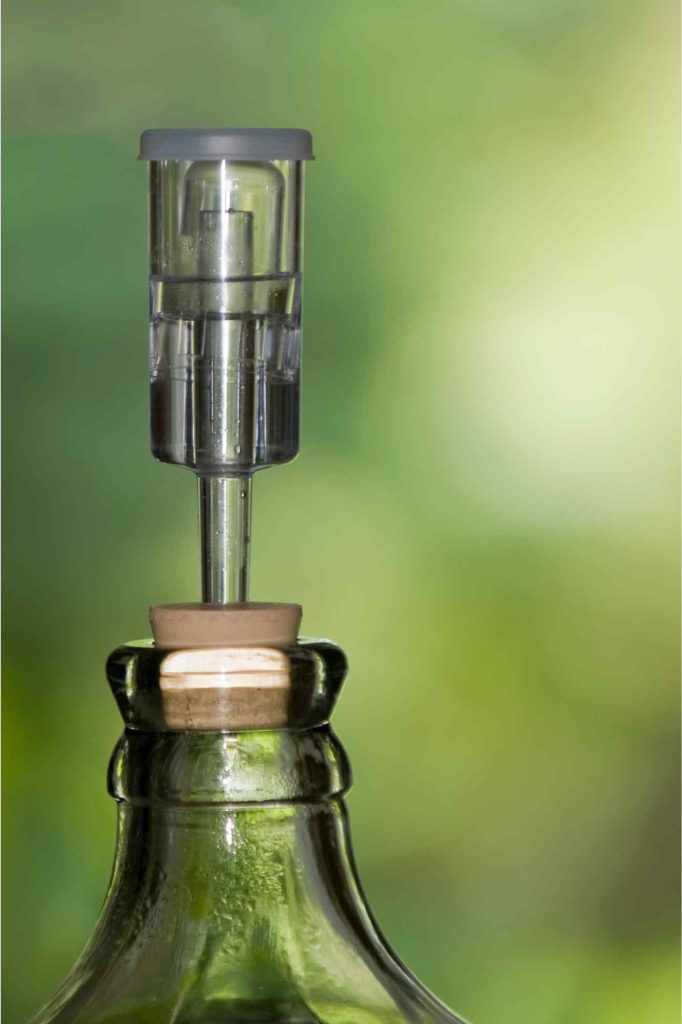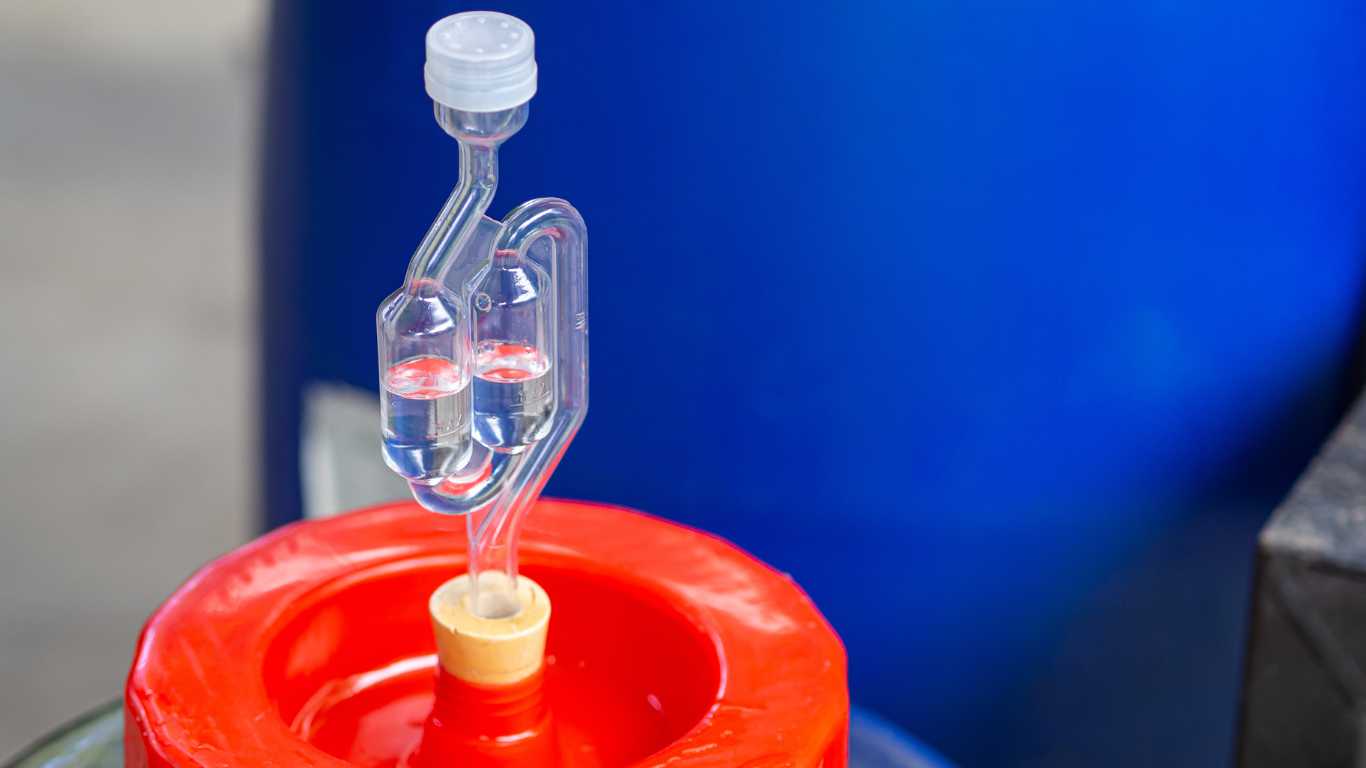Fermentation is one of the most famously-used methods of brewing or creating a range of delicious dishes. In the complex process of fermentation, airlocks play a key role. These tools are crucial for maintaining controlled conditions of chemical changes. But a common question arises in our mind- do you need an airlock for fermenting food?
Airlock is an essential part of fermenting food but it is possible to ferment food without using it. In that case, we will need alternative methods of keeping the container sealed so that the chemical reaction can occur smoothly. So, airlocks aren’t mandatory for fermentation.
Whether you are a seasoned professional or have just gotten into fermenting food, there is much to uncover about it being airtight or not. When we ask if an airlock is absolutely necessary for fermenting food, there is a more detailed picture to explore. So, in this article, we will dive deeper into exploring if we need airlock for fermenting food and alternatives we can use.
Can You Ferment Without Airlock?
Yes, it is possible to ferment without using an airlock. However, using an airlock is a common practice to create a controlled environment for fermentation.
An airlock is a device used in fermentation to conduct the proper passage of gasses produced during the process. With the help of an airlock, the gases can escape from the container while preventing outside air and contaminants from entering. It helps maintain a controlled and anaerobic environment for the fermentation process.
We often think that fermentation cannot happen without using an airlock. In truth, fermenting without an airlock is possible. Various alternative methods can be employed to achieve successful fermentation to help the chemical changes remain the same. It includes options like making your own DIY airlock, using a sanitized balloon or rubber gloves, etc.
While these alternatives may not offer the same precision as commercial airlocks, they provide practical solutions for fermenting without this specific device. Regardless of the chosen method, maintaining cleanliness and sanitation is crucial to ensuring a successful fermentation process. So, you can ferment without using an airlock; you just have to use the correct alternatives.

What Can You Use Instead of Fermentation Lock
If you don’t have a fermentation lock or airlock, there are several alternatives you can use to allow gases to escape during fermentation while still providing some protection against contaminants. These alternatives essentially function as one-way valves. They allow gases produced during fermentation to exit the vessel, preventing pressure buildup.
At the same time, the alternative tools offer some protection against external contaminants. It’s crucial to keep all components clean and sanitized to ensure a successful and uncontaminated fermentation process. There are many alternatives that you can use instead of a fermentation lock. Here are some common alternatives.
Blow-off Tube
A blow-off tube is a practical alternative to a traditional fermentation lock, offering an effective solution for managing gas release during the fermentation process. In this setup, a tube is inserted into the fermentation vessel, and its other end is placed in a container filled with sanitizer or water.
As gases, primarily carbon dioxide, are produced during fermentation, they travel through the tube and bubble into the liquid in the external container. This bubbling not only serves as a visible indicator of the ongoing fermentation activity but also prevents contaminants from entering.
Similar to a fermentation lock, the blow-off tube allows gases to escape while maintaining a controlled and anaerobic environment. The blow-off tube’s simplicity and efficiency make it a practical choice for homebrewers and fermenters. It serves as a reliable method to facilitate gas release and protect their fermentation from potential contaminants.
Loose Lid or Seal and Burp
The Loose Lid or Seal and Burp method offers an effective approach to managing gas release during fermentation in the absence of an airlock. When utilizing a container with a lid, the lid is deliberately left slightly ajar or sealed loosely. This intentional allowance of space creates a controlled yet partially sealed environment within the fermentation vessel.
As the fermentation process unfolds and microorganisms produce gases, particularly carbon dioxide, the partially open or loosely sealed lid provides a pathway for the built-up gases to escape gradually. This measured release helps prevent the accumulation of excessive pressure within the container, mitigating the risk of leaks.
By periodically “burping” the container—opening the lid to release accumulated gases—the process closely resembles the controlled gas-release mechanism of an airlock. This practice ensures that gases can vent out, mimicking the protective barrier against contaminants provided by an airlock.

Homemade Airlocks
The homemade airlock method provides a practical alternative to commercial airlocks for managing gas release and preventing contamination during fermentation. In this approach, a sanitized tube is inserted into the fermentation vessel, with the other end submerged in water or sanitizer.
You can create a simple airlock by inserting a sanitized tube into the fermentation vessel’s opening and placing the other end in a container of water or sanitizer. Gases bubble through the water, creating a barrier against contaminants. The bubbling from gas production serves as a visual indicator of fermentation activity and creates a barrier against contaminants.
Similar to commercial airlocks, homemade airlocks enable the controlled escape of gases, preventing pressure buildup within the fermentation vessel. This method replicates the protective function of fermentation locks, ensuring a controlled and anaerobic environment for fermentation, and stands out for its simplicity and cost-effectiveness.
Balloons or Rubber Gloves
We can get a simple solution of fermenting without airlocks by using balloons or rubber gloves. It is practical for managing gas release and contamination prevention during fermentation. You can make your device by simply stretching a sanitized balloon or rubber glove over the fermentation vessel’s mouth.
Following that, gases, particularly carbon dioxide, accumulate during fermentation stored in the balloon or glove and make it inflate. So, it serves as a visible indicator of ongoing activity. This method mimics the dual functionality of a fermentation lock, allowing gases to escape while acting as a barrier against external contaminants.
The simplicity and cost-effectiveness of using a balloon or rubber glove make it an accessible option for those seeking an uncomplicated way to monitor and control fermentation. The inflated balloon or glove acts as a barrier, preventing airborne impurities from entering the fermentation vessel. So, it replicates the dual functionality of a fermentation lock and helps you to ferment food without using an airlock.
Does Fermentation Need to Be Airtight?
Yes, airtight conditions are often preferred to control the fermentation environment. At the same time, it’s important to consider the specific requirements of the microorganisms involved and the desired characteristics of the final product.
In many fermentation processes, particularly those involving the production of alcoholic beverages or lactic acid fermentation, creating an anaerobic environment is necessary. In these cases, an airtight or partially sealed environment helps prevent the entry of oxygen, which could lead to spoilage and the growth of unwanted microorganisms.
However, some fermentation processes benefit from exposure to oxygen. For example, certain types of wild fermentation, such as sourdough bread making or certain vegetable fermentations, thrive in the presence of oxygen. In these cases, an airtight environment may hinder the growth of beneficial microorganisms.

Moreover, some traditional fermentation methods involve open vessels or loosely covered containers, allowing gases to escape naturally without the need for airtight seals. Ultimately, using an airtight environment or not depends on the type of fermentation and the specific goals of the fermentation process.
If you would like to learn more about what you can ferment, I recommend you check out my blog which explores if you can really ferment anything.
Conclusion
Airlocks are an integral part of conducting the chemical changes of the fermentation process. However, we can still ferment food without using an airlock and achieve our desired results.
In the end, using careful observation and the right alternatives can get us the best results from fermenting our food. Thus, regular monitoring and using the right guidelines are vital for a successful product.



